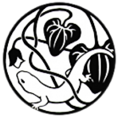About
Madagascar is the world’s greatest natural evolutionary laboratory, and the mission of the Yoder Lab is to understand its evolutionary history and biological complexity, and in so doing (we very much hope), contribute to a global effort to conserve and protect what remains of its unique biota. Madagascar is the world’s fourth largest island and is home to approximately 5% of the worlds biodiversity, with 80% of these organisms being unique to this island nation. The inordinately high levels of endemism and biological diversity constitute a compelling reason to study the system with the hope that knowledge gained from this smaller but complex system will have applications across the globe. Madagascar serves as a sort of speciation lab, and a testing ground for conservation methodologies. The island has been designated as one of the most critical geographic priorities for conservation action, retaining less than 10% of the natural habitats that existed before human colonization. It is urgent that information be obtained as quickly as possible to document the biota that occurs in the remaining and highly threatened forested areas. By appropriately analyzing these data, we aim to understand the evolutionary mechanisms that generated Madagascar’s unique biodiversity as well as to inform conservation action. Our work utilizes a multidisciplinary approach that includes field inventory activities, advanced evolutionary genetic techniques, and geospatial analysis. Over the years we have collaborated extensively with Malagasy colleagues and these collaborations continue to inform and direct our studies.
This fascination for Madagascar began when Anne was an undergraduate at the University of North Carolina – Chapel Hill and took a tour of the then Duke University Primate Center (now, Duke Lemur Center). The realization that so much evolutionary diversity was unique to a single island, comprising only about 0.01% of earth’s land surface area, inspired a lifelong obsession that continues today. What began as a fascination for the evolutionary origins of lemurs and the historical biogeography and phylogeographic history of Madagascar transitioned into broader interests in evolutionary theory and methodology such as phylogenetics, molecular evolution, divergence time estimation, and phylogeography. These methodological and theoretical approaches are each implemented for understanding the history, biology, and conservation needs of lemurs and other Malagasy biota. We are also using integrative genetic, field, and geospatial methods to anticipate the impact that climate change is likely to have on lemurs and their habitats. Current projects cover a wide range of empirical and bioinformatic approaches, including virtually all of the “omics”, particularly speciation genomics, phylogenomics, transcriptomics, metagenomics, and genome assembly of non-model organisms. These projects include an array of biological phenomena such as the hibernation phenotype in dwarf lemurs, the ecology of the gut microbiome across the lemuriform radiation, and most passionately, the phylogeography and speciation dynamics of mouse lemurs. In turn, these organismal interests take us into diverse array of “next-generation” methodologies, as well as into biological tangents such as the molecular evolution of chemosensory communication as a potential mechanism for generating and/or maintaining species boundaries in lemurs. We also contribute to studies that fall into the category of evolutionary medicine, wherein phylogenetic perspectives can inform our understanding human disease phenotypes.
At the very core, the lab is driven by the thrill of the scientific chase. We are constantly asking questions that although may be specific to Malagasy biota, are generally applicable across the tree of life. Once the question is asked, the real fun begins with determining the type of data that must be collected, the means for collecting those data, the methods for analyzing them, and finally, identifying the collaborators that are necessary for proper interdisciplinary integration. The environmental crisis in Madagascar has placed us in a race against the clock, but the excitement of the science, and the invigorating collaborations that we enjoy, make our work both a pleasure and a privilege.


